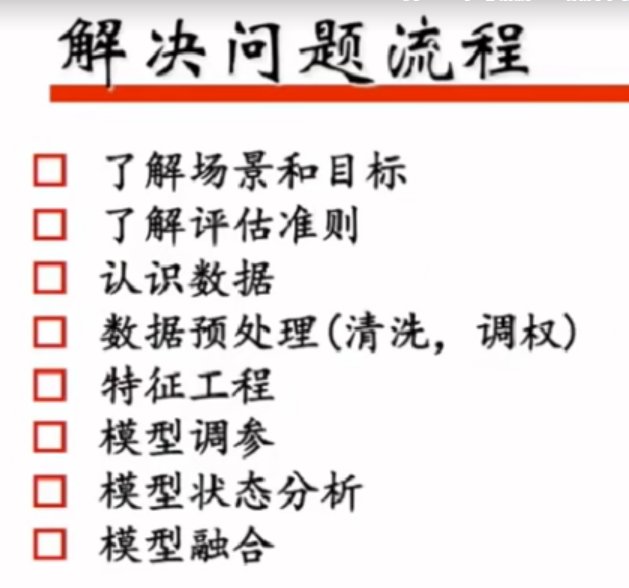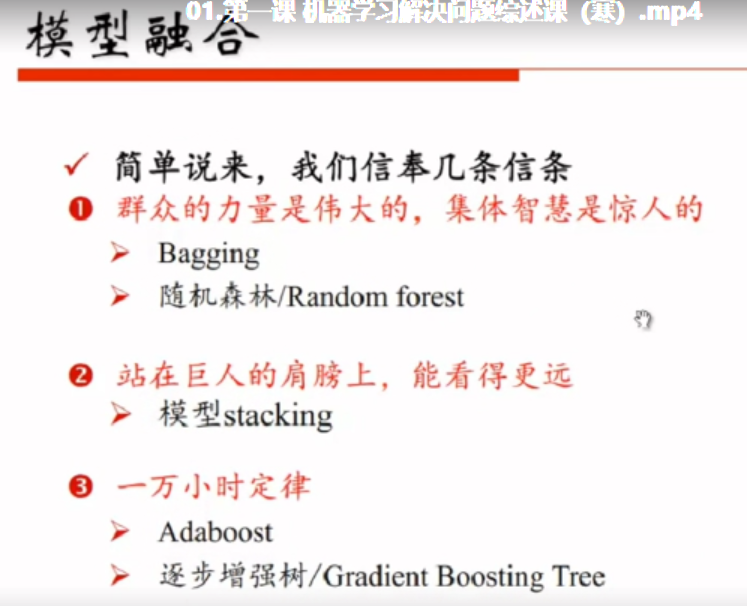文章来源:
https://blog.csdn.net/han_xiaoyang/article/details/50469334
https://blog.csdn.net/han_xiaoyang/article/details/52910022
1. 常用算法

(from 七月在线-kaggle竞赛视频)。
2. 流程

3. 知识点
1. 样本不均衡时,如正负样本10:100,解决办法。
(样本不均衡的坏处,如1:100,把数据都判断为负类,在训练时数据误差很低,但是预测时很不准确)
1)将正样本上采样(正样本重复若干次)
2)损失函数(加大正样本的loss)
3)把负样本分成10分,分别与正样本去训练。如bagging去投票
2. 工具
pandas:数据量大的时候,一个特征维度的去做。
hive sql / spark sql
3. 缺省
缺省很小:填充
缺省很大:舍去
缺省适中:把缺省当作一个特征
4. 数据域
当前数据域分布没有规律,可以变换到log域、指数域----可能数据会呈现一定的规律
时间类数据:间隔、与其他特征组合、离散型、时间段
文本型数据:n-gram、bag of words、TF-IDF、wordvec
统计型特征:min、max、中位数
5. 主要用的两个模块(sklearn) https://scikit-learn.org/stable/index.html
preprocessing 以及 feature_extraction
https://scikit-learn.org/stable/modules/preprocessing.html
https://scikit-learn.org/stable/modules/classes.html#module-sklearn.feature%20extraction
6. 模型融合

blending
bagging

stacking

使用不同的分类器,产生不同的分类结果。将这些结果作为输入,

如果使用这些结果的的linear取加权平均。就是blending方法。(没有再sklearn中封装)
boosting
Adaboost: 调样本的权重
xgboost / lightgbm
7. 绘制学习曲线(模型状态评估)
https://www.zybuluo.com/hanxiaoyang/note/545131
8. xgboost的调参
https://github.com/dmlc/xgboost 有一些xgboost的demo